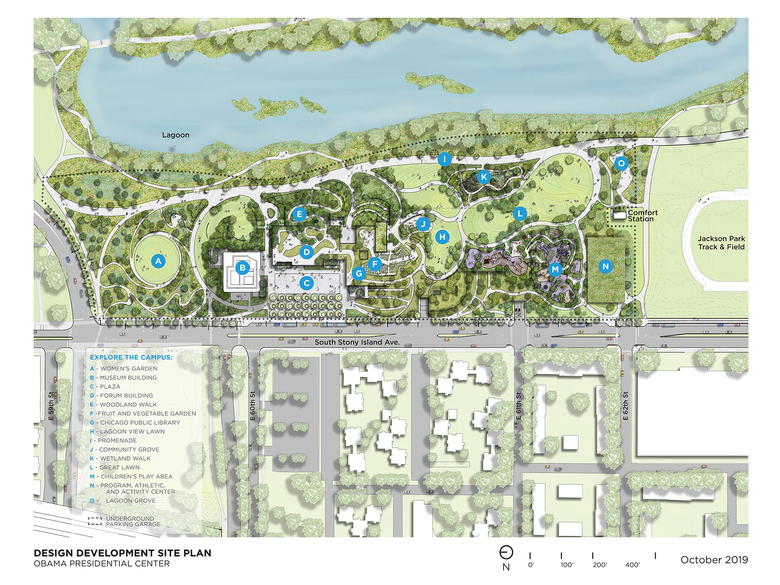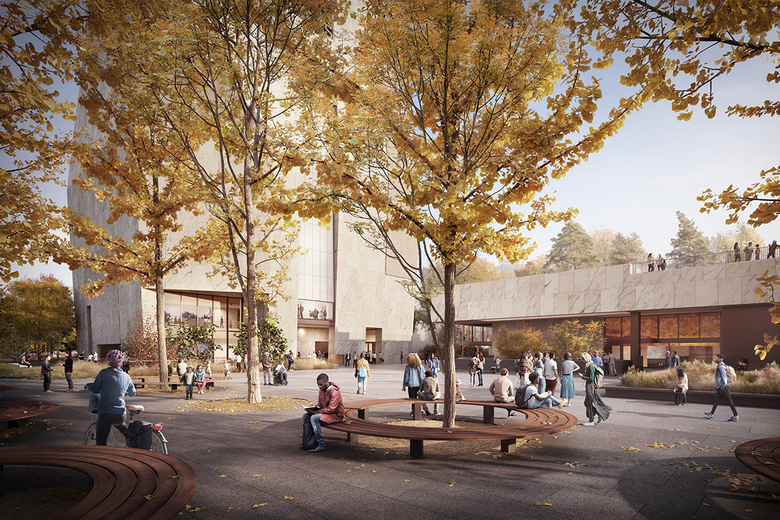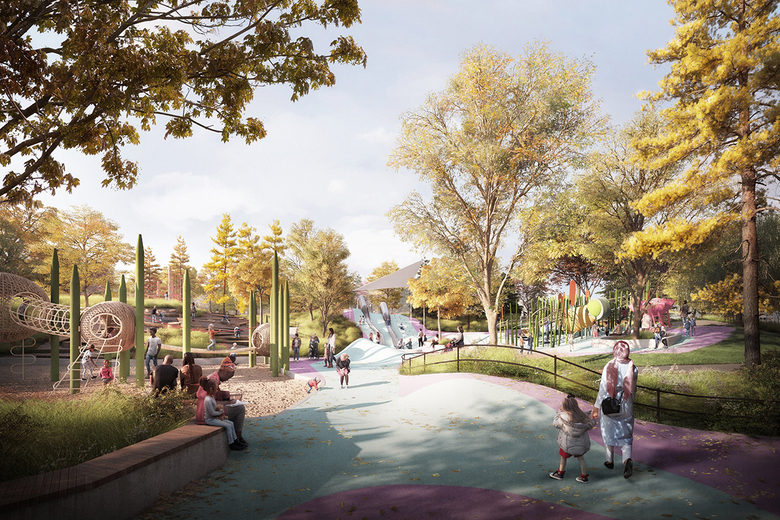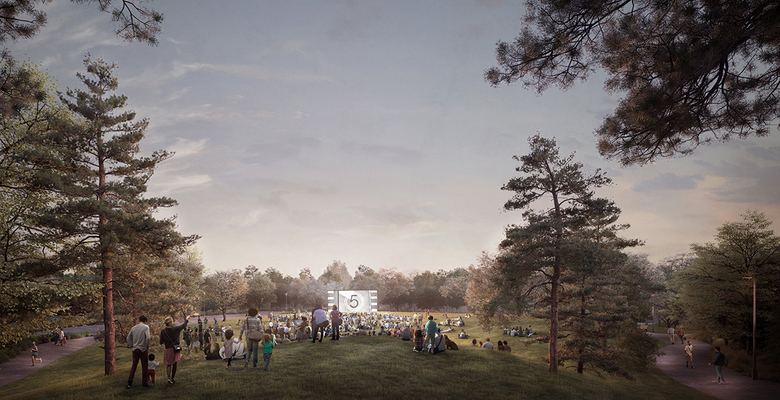Updated Obama Presidential Center Renderings Released
The Obama Foundation has revealed updated renderings for the Obama Presidential Center (OPC), the project designed by Tod Williams Billie Tsien Architects (TWBTA) for a site in Jackson Park on Chicago's South Side.
The renderings, released on October 28 to coincide with the 2019 Obama Foundation Summit in Chicago, are the third batch of images, following a first look in May 2017 and a refined design presented in January 2018. The new renderings focus on two areas: updates to the design of the museum building, the tallest of the four buildings arranged around a plaza; and the sustainable stewardship of the Frederick Law Olmsted landscape, which must stem in part from the vocal criticism levied by The Cultural Landscape Foundation.
Next up for the OPC is a federal-level environmental review under the National Environmental Policy Act (NEPA), which requires "federal agencies consider the effects of their actions on historic properties." A federal decision on the NEPA environmental assessment is expected in spring 2020, after which the OPC could break ground if approved.
Museum Building
In regards to the museum building — the tower that will most likely become the OPC's symbol — a statement from The Obama Foundation indicates that design refinement has strove to make the tower "more organic in form and to appear more elegant and inviting as visitors approach from all directions." Specifically, TWBTA and Interactive Design Architects (IDEA) have worked to:
- "Make the building more sculptural and create a more deliberate connection to the ground; incisions on the southwest and southeast corner helped reduce the building’s profile from multiple directions, and the faceted stone will reflect the changing daylight;
- "Further reduce the solidity of the structure by introducing an 88-foot expanse of glass that will have clear windows at the mezzanine level, and emit a soft welcoming glow; and
- "Wrap the middle southeast corner with a textured stone. Initially slated to display carved text, this area will now have a simpler finish."
Landscape Stewardship
The same statement describes the nearly 20-acre site the OPC would occupy as "underutilized and, with the addition of Cornell Drive, disconnected from the rest of the landscape." The built footprint of the project would be just two of those acres, with all but the museum tower topped by green roofs that integrate them into the park landscape. Per the statement, "In keeping with the Frederick Law Olmsted’s ethos of creating parks for the people, the majority of the OPC site will remain open park space for the community." The landscape design is being overseen by Michael Van Valkenburgh Associates.
The list of sustainable landscape features provided by The Obama Foundation:
- "a one-acre wetland area that will capture and treat stormwater and feature a 'Wetland Walk' that threads through the area and offers a unique environment with seating, a tree canopy, and a place for children to play;
- "the Women’s Garden, which preserves the signature circular form and location of the historic sunken lawn, with a new enlarged perennial garden that captures and treats rainwater encircling the garden;
- "more trees than exist on the site today; and
- "soil harvesting that will allow the site to benefit from soil microbes that exist today, with new soils in areas where existing soil is depleted."












